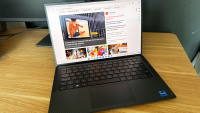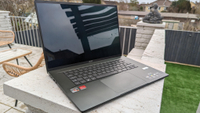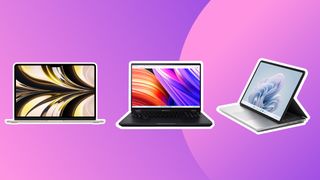
Jump to the quick list↴
1. Best overall: MacBook Air 15
2. Best screen: Asus ProArt OLED
3. Best 2-in-1: Surface Studio 2
4. Most portable: ZenBook S13
5. Most powerful: MacBook Pro M3
6. Best budget: Vivobook Pro 16
7. Best gaming: Predator Helios 16
8. Biggest screen: Dell XPS 17
9. Most versatile: Zenbook Duo
Also tested
How to choose
How we test
FAQs
The best laptops for photo editing provide the power to run resource-intensive software such as Photoshop without breaking a sweat. They also boast high-resolution, colour-accurate displays so you can see everything clearly and in detail. And best of all, they’re light and compact, so you can just stick them in your bag and go.
To narrow down your choices, our experts have tested a wide range of laptops, running benchmark tests to check their capabilities, and using them to edit images in some of best photo editing software, to make sure they actually do the job well in practice.
We’ve used those experience to whittle down our list to the absolute best laptops for photo editing on the market today. If you need to complete your setup, also see our guides to the best monitors for photo editing and the best tablets for photo and video editing.
Quick list
 Best overall
Best overall
We think Apple’s latest MacBook Airs provide the best balance of power, build and display quality and price. They’re slim and light, the M3 chip is fast and efficient, and we found battery life to be excellent too.
Read more below
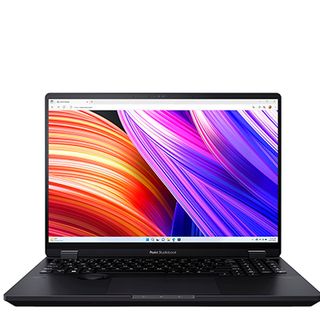 Best screen
Best screen
This Windows laptop comes with a gorgeous colour-accurate OLED touchscreen that’s the best around today. It also boasts powerful internals that can easily handle raw editing, and a brilliant dial for shortcuts.
Read more below
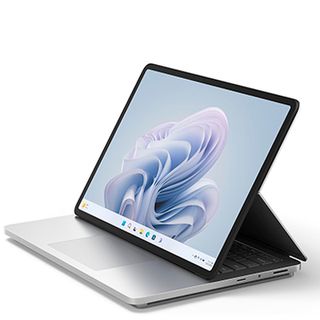 Best 2-in-1
Best 2-in-1
With a versatile touchscreen that can be placed in three positions, we think this is a great option for those who want to edit photos using a stylus. It’s also ideal for digital artists who use Windows.
Read more below
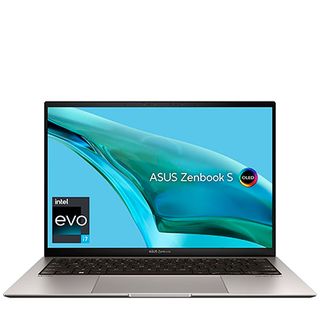 Most portable
Most portable
This thin Windows laptop weighs just 1kg, making it ideal for photo editors who travel a lot. It also has the best screen we’ve ever seen on a small-format laptop; one that provides excellent colour coverage.
Read more below
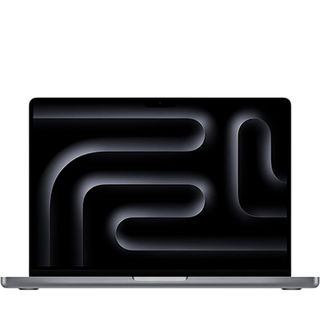 Most powerful
Most powerful
If you edit video as well as photos, the powerful M3 Pro MacBook Pro has you covered. The 16-inch screen, bright mini-LED screen provides excellent contrast, and battery life is superb as well.
Read more below
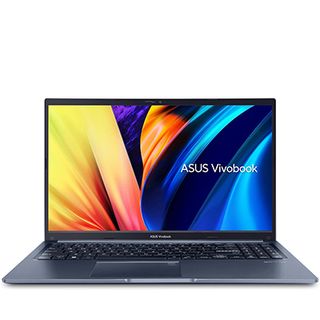 Best budget
Best budget
We found this to be a great value laptop for photo editing, providing solid performance and colour accuracy for a more accessible price tag than the other options in our guide. The OLED display provides excellent contrast.
Read more below
The best laptop for photo editing overall
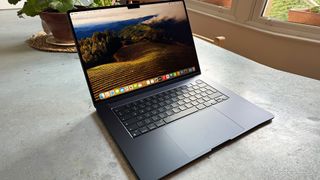
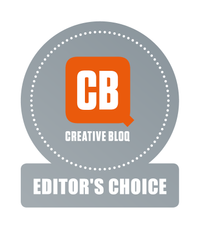
Specifications
Reasons to buy
Reasons to avoid
The MacBook Air may not be as powerful as its Pro cousin further down our list, but we think it’s the better buy for photo editing. A MacBook Pro will be overkill for most people for photo editing alone, and we found that the latest M3-powered Airs are more than capable of running the most popular editing software such as Lightroom, Photoshop and Luminar Neo without a struggle.
As well as being cheaper, the Airs have the advantage of being a little lighter thanks to their fanless design, while battery life is almost as impressive as on the Pros; we got 16 hours from a charge on the 15-inch model).
The MacBook Air was redesigned a couple of years ago, and the reduced bezels maximise the screen space. We found colour support and accuracy to be sound, while 500 nits of brightness was enough to allow us to work comfortably without reflections interfering.
If you’re doing video editing as well as photo editing, you may want to splash out more for one of the M3 MacBook Pros (see below), but for photo editing alone, this is our top pick.
We’ve chosen the 15-inch MacBook Air over the smaller 13-inch version since we found that the larger screen was more comfortable for editing, reducing the cramped feeling that can come with some editing interfaces and allowing images to be viewed at a larger size. However, if portability is your main concern, we also highly rate the 13-inch version of the laptop, which has almost identical specs in cheaper, more compact package. See our full Apple MacBook Air M3 (2024) review for more details.
The best laptop screen for photo editing
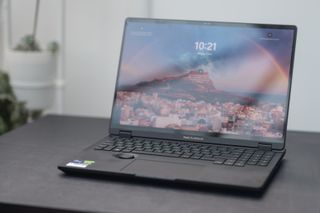
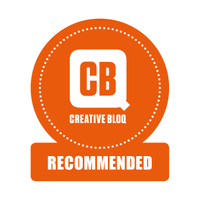
Specifications
Reasons to buy
Reasons to avoid
For a Windows option that combines comparably powerful components with a large 16-inch display, this is our pick as the closest contender to a MacBook. We found the screen perfectly suited for photo editing (and video editing too) thanks to customisable colour sRGB, DCI-P3, Display-P3, and Native colour profile options. We tested 100% of the DCI-P3 cinema gamut, and a Delta-E score of less than one for excellent colour accuracy.
That alone makes this one of the best screens on any laptop we’ve tested, but it gets better. It’s a touchscreen with stylus support that recognises 4,096 pressure levels, which is a boon for those who prefer a more tactile approach to making selections or dodging and burning.
And then there’s the innovative dial to the left of the trackpad. It can be used to adjust brush size, to zoom in or control things like exposure and saturation in Lightroom in a way that feels a lot less awkward than using the fiddly sliders in the software’s interface.
Like the MacBook Pro (below), there’s more power than you need for photo editing with the base 16GB RAM option. You might want to ramp it up to 32GB if you’re also doing 4K video and want to ensure a future-proof investment.
Our only complaint was battery life. We got around four and a half hours. That’s disappointing, but this is a power-hungry machine. Overall, we were impressed with its ability to stay cool and quiet during use, with an effective cooling system that easily kept things running efficiently while we edited RAW images. For more details, read our ASUS ProArt Studiobook OLED review.
The best 2-in-1 laptop for photo editing
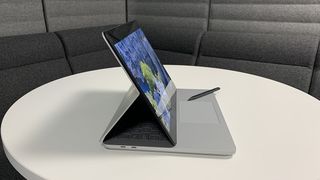

Specifications
Reasons to buy
Reasons to avoid
If you like to use a stylus for photo editing, the Surface Laptop Studio 2 could provide the versatility you’re looking for. As well as the traditional position, this laptop can also be placed in tablet or easel positions.
The screen resolution is better than FHD, and it’s a nice size for editing too. Most of the laptops we have recommended for photo editing have 16:10 aspect ratios. That gives a little more vertical height than a traditional 16:9 display, which is good for working with images in portrait orientation. But the Studio 2 has a 3:2 aspect ratio, which is a little taller again.
We found the 120Hz refresh rate was sufficient to ensure responsive performance from the Surface Slim Pen (not included). Power will be no problem either, since, like all of our picks so far, it can be configured with specs way beyond the needs to photo editing software.
Our benchmark tests were a little less impressive than we had hoped, but it’s not something you’re going to notice for photo editing. Battery life could have been better, though – we saw nowhere near the 16 hours that Microsoft claims. See our Surface Laptop Studio 2 review for full details.
The best portable laptop for photo editing
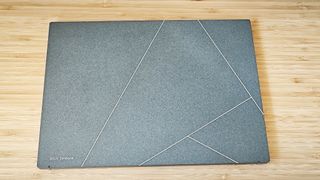
Specifications
Reasons to buy
Reasons to avoid
The laptops we’ve looked at so far provide almost everything a photo editor could need bar one aspect that could be important if you’re a photographer who often has to edit on the go. Portability. Larger screens are great for comfortable editing, but not so great for carrying in hand luggage or working on cafe tables.
This almost impossibly light device from Asus is a different story. It’s a 13-inch laptop that weights just 1kg. And our reviewer found it had the best screen he had ever tested on a small-form laptop: sharp, bright at 550 nits and with Pantone-certified colour coverage of up to 100% DCI-P3 (we also tested sRGB coverage of 113%). With a 1,000,000:1 contrast ratio, the OLED display boasts excellent resolution of dark and light areas too.
The design of the laptop itself is gorgeous to look at, and despite the small size, we found it comfortable for extensive editing with native chiclet keyboard and trackpad proving to be responsive and surprisingly pleasant to use.
Our reviewer also enjoyed watching films and TV on the device, and if you do also want to edit videos, the RAM can be configured up to 32GB. Such a thin body doesn’t leave much space for ports, but there is still a USB-A 3.2, two Thunderbolt 4 (which can support a display and power delivery), HDMI 2.1 port and an audio jack. Read our Asus ZenBook S 13 OLED review for more.
The most powerful laptop for photo editing
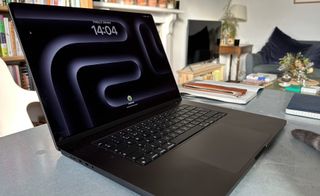
Specifications
Reasons to buy
Reasons to avoid
Coming with Apple‘s M3 Pro or M3 Max chip, this laptop provides way more graphical processing power than you need for photo editing, but it could be worth the extra investment if you also do video editing or 3D work. We found that the superior contrast of the mini-LED tech in the Liquid Retina XDR display is notable when compared to the cheaper MacBook Air, with deep blacks and bright whites. You also get support for HDR with 1600 nits peak XDR brightness, and a faster 240Hz refresh rate, which makes the display feel super responsive.
The 16-inch screen is perfect for photo editing and all kind of creative work, and then there’s the incredible battery life – we measured up to 22 hours for streaming. The newest Pro also retains an HDMI port, so you can plug in an external screen easily for even more comfortable image editing, and there’s a SD card slot for those who like to transfer their images the traditional way.
Of course, that battery life is great for editing on the go. But the contradiction here is that this is the largest MacBook and not the most comfortable for carrying about in a backpack. It is relatively sleek and streamlined for a 16-inch device, but if portability is a major concern, you might prefer the 14-inch model (see our MacBook Pro M2 14-inch review) or the M2 MacBook Air, which we’ve included further down in our selection.
Read our review of the MacBook Pro 16-inch (M3, 2023) to find out more about why we rate this laptop.
The best budget laptop for photo editing
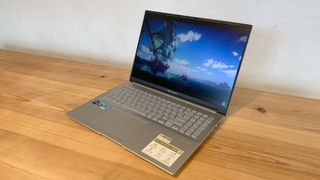
Specifications
Reasons to buy
Reasons to avoid
If you don’t need such a huge amount of power for tasks other than photo editing, we highly rate the Asus Vivobook Pro 16. It’s great value laptop for creatives in general, providing dedicated graphics for a great price. The colour coverage is narrower than on some other Asus models, but it’s still accurate and broad enough for digital use.
The OLED display provides excellent contrast, and the 600 nits of peak brightness were enough to make the screen comfortable to use in bright light in our testing. It’s not a touchscreen, so no stylus support here, but the display provides solid colour accuracy, validated by Pantone. We would opt for the 3.2K version ( 3200 x 2000) for the best definition.
Battery life could be better, but all in all, we can’t argue with the value of this laptop. See our full Asus Vivobook Pro 16 review for more details.
The best gaming laptop for photo editing
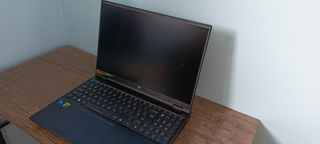
Specifications
Reasons to buy
Reasons to avoid
Many gaming laptops also have ideal specs for photo editing, and here’s a great example. With fast Nvidia dedicated graphics, this powerhouse can run Photoshop smoothly and efficiently, and you also get a large, bright display with a decent 2,560 by 1,600 pixel resolution. We tested solid colour coverage of 100% of sRGB and 100% of DCI-P3. You’re well catered to with ports too, including HDMI and two high-bandwidth USB-C sockets.
Downsides? Weighing 2.6 to 2.9kg depending on the configuration, this is a very, very bulky laptop that we wouldn’t want to carry around too often. Battery life suffers too. If if extended uptime away from the mains is critical, a gaming laptop isn’t the way to go. It’s also much more than you will need for photo editing alone, but if you’re a photo editor who also wants to enjoy AAA PC gaming, this can easily serve for both.
The Nvidia RTX 4080 configuration is outlandishly expensive, but the base 4060-equipped option is more than enough for photo editing and comes in at under $/£2,000. Read our full Acer Predator Helios 16 review for more.
The best large screen laptop for photo editing
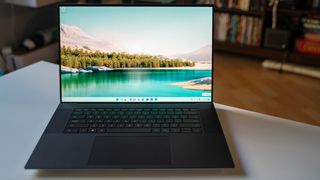
Specifications
Reasons to buy
Reasons to avoid
We’ve mentioned several 16-inch laptops as being excellent options for photo editing because of the size of the screen, but you can go even larger still. We found the Dell XPS 17 to be impressively slim for a 17-inch device, although the size does inevitably rule out accommodation in many backpacks.
The laptop can be configured with all the power you want, again, well exceeding the requirements of photo editing. But the big draw here is of course the large 4K touchscreen display. We found 4K resolution on a screen of this size to be a clear advantage in terms of screen real estate, and picture quality was impeccable, with sharp details and vibrant colours.
The screen provides a good level of brightness at 500 nits, and it covered 100% of Adobe RGB and 94% of the DCI-P3 gamut according to our tests. Dell isn’t quite clear on what HDR rating the laptop has, but we found that it recovered a lot of detail in shadows. It also has anti-reflective coating
We tested the 32GB RAM configuration with intel i7-11800H and NVIDIA GeForce RTX 3060. Naturally, processor-intensive tasks showed little slowdown. It took just under three minutes to export 100 high-resolution images from RAW to JPEG in Lightroom, and we were able to game too.
Like the bulky Predator Helios, we don’t recommend this for anyone who’s shooting on location, but for a home studio setup, the extra screen space is a pleasure for editing. See our full Dell XPS 17 review for more details.
The most versatile laptop for photo editing

Specifications
Reasons to buy
Reasons to avoid
The Asus Zenbook Duo OLED (2024) is a major update on what was already a hugely innovative laptop. Equipped with the latest AI-boosted 14th-gen Intel Core Ultra processor and NPU, it has not one, but two full-size 14-inch screens, the second one revealed by detaching the removable keyboard.
It might sound like a gimmick, but our reviewer found that it offers lots of potential for photographers and editors looking for extra display real-estate. One option is to use it to extend the workspace onto a second screen; another other is to use it as a separate display to show different applications.
Our reviewer was able to use the second screen to use Adobe Photoshop’s tools while working on a full-size image on the main one. Using extra screen does impact battery life significantly, however.
The main screen provides solid specs for photo editing. It’s an OLED display, and we tested 100% coverage of the DCI-P3 gamut. There’s plenty of power, and even with ‘only’ the Intel Arc Graphics on board it rattled through visually demanding tasks. We didn’t notice any hanging when working on projects, and the benchmarking scores agreed. Ports are present and correct, with 2x Thunderbolt and 1x HDMI, though again no SD card.
We were also impressed with the build quality. It might not be the most compact laptop for using on the go, but it should be able to take some mistreatment thanks to the all-metal build. Read our Asus Zenbook Duo OLED review for more.
Also tested
These laptops also scored very well in our tests and are strong options should you not find what you’re looking for above…
Dell Precision 5470
We found this powerful laptop handles photo editing and more with ease. We experienced no lag with 3D rendering, and it can give the MacBook Pro a run for its money.
Read our 4.5-star review.
Framework
Framework is harder to find, but it could be worth it as a sustainable investment since it’s designed to be easy to take it apart and swap components. That means it can keep up with changes as internal components improve, and the demands of editing software increase, which may happen as more AI tech is incorporated.
Read our 4.5-star review.
Acer Swift Edge 16
Our reviewer’s verdict was that the Acer Swift Edge 16 is an excellent all-around laptop. It strikes a fine balance between power and portability, and is surprisingly light and agile for a 16-inch laptop. While it’s not built for the beefiest of 3D rendering tasks or video editing, it is still capable of handling image-editing tasks with ease.
Read our 4.5-star review.
How to choose the best laptop for photo editing
The best laptop for photo editing for you will depend on your priorities and your workflow. All of the laptops what we have tested and included in this guide and capable of editing raw images in professional editing software without struggling, and they all offer sufficient colour coverage and accuracy to allow precise editing. However, beyond that, they each have different advantages and disadvantages in terms of size, portability, price and power for other tasks.
If you also do video editing or want to explore 3D work, you are more likely to benefit from the power of a device like the MacBook Pro, Asus ProArt Studiobook OLED or Dell XPS 17. However, these are large and expensive laptops and may be an unnecessary expense if you don’t need so much power. In that case, you may wish to prioritise portability. The Asus ZenBook S OLED and MacBook Air are our top picks here.
How we test laptops for photo editing
We’ve picked the devices on our list of the best laptops for photo editing based on our own reviews, for which we carry out standardised lab tests and also put the laptops through real-life use over several weeks.
All the laptops in this guide have been tested either by using software used by photo editing pros or benchmarked to ensure the CPU and GPU are capable of the most intensive photo-editing tasks. We run different benchmark tests on each device depending on its intended use by its maker, but the laptops we’ve included in this guide have all been run through the following:
• Cinebench R23/2024 – this assesses the performance of a computer’s CPU and GPU using real-world 3D rendering tasks
• Geekbench 5/6 – this tests the CPU’s processing power, both by using a single core for a single task at a time as well as all the CPU’s core to see its ability to multitask
• PCMark 10 – this test assesses a computer’s ability to run all everyday tasks from web browsing to digital content creation, testing app launch speeds, graphic rendering and even battery life
But perhaps more importantly than technical benchmarking, we evaluate machines in real-world situations, pushing them to the limit with multiple applications running to see how they perform in real project-like conditions.
Power, speed, flexibility, and what a computer looks and feels like to use are all criteria in our reviewing process. We do much more than simply unpack a test unit, run some benchmarks and then pack it up again; we have lived and worked with all of the above computers, running them in real-life scenarios and completed projects relevant to the subject of this guide, otherwise we wouldn’t recommend these models to you.
See more details on how we test laptops and PCs to learn more.
FAQs
What specs do I need in a laptop for photo editing?
In terms of specs, you may be able to get away with 8GB of RAM in a laptop for photo editing, but ideally you will go for 16GB because software such as Lightroom can struggle with 8GB if you’re editing high-resolution RAW images. You’ll also want a modern Intel Core i5 processor (or AMD Ryzen 5) as a minimum. These processors come with decent integrated graphics which will be more than enough for photo editing, but a dedicated graphics chip can make a world of difference if you use GPU-accelerated tools in a program like Photoshop.
As for the display, you’ll want the most colour-accurate screen you can afford. Some displays come with factory calibration to ensure image quality is as good as possible, though we also recommend adjusting your display with one of the best monitor calibrator tools). Screen size is also a consideration, although you may prefer to pair a smaller laptop with an external monitor. We recommend at least 1080p resolution, and the higher resolution you get. If your budget can stretch to it, a laptop with a 4K screen may be worth investing in if you’re going for a larger size device since it will allow you to see more details when zoomed out and provide more working space.
As for storage space, the SSD drive should be 256GB at a minimum. Bigger is better if you’ll be storing a lot of photos on the device. If you’re editing RAW images, anything less than 1TB can fill up pretty quickly, but you can also use cloud storage.
One of the best things about using a laptop for photo editing is that it gives you the freedom to work on your photos almost anywhere rather than being stuck at a desk with a traditional PC. That means that battery life is an important consideration, as you’ll want something that will last for hours without needing to be plugged in.
What laptop is best for photo editing?
Right now, we think the MacBook Pro 16-inch (2023) is the best fit for photo editing. That’s because of the giant screen, power that can handle any workflow and unbeatable battery life. We also love the overall build and design, and it has the ports we want. If you’re not an Apple fan, we would go for the ASUS ProArt Studiobook OLED (H7604). It has an excellent screen, more than enough power, and a handy dial that can speed up your workflow once you’re used to it.
Are Macs or PCs best for photo editing?
This is entirely subjective. There is nothing inherent in either PCs or Macs that makes one better than the other for photo editing, and most major photo editing software is available for both Windows and MacOS. All MacBooks have enough power for photo editing, but many Windows PCs also make the grade. The most important thing are the specs provided.
Many people like the design and feel of Macs and the Mac operating system, while others are more familiar with Windows. Of course, a Windows PC is the only way to go if you want a touchscreen device that can run desktop photo editing software. This can be handy for making selections and navigating panels using a stylus. There are no touchscreen MacBooks.

